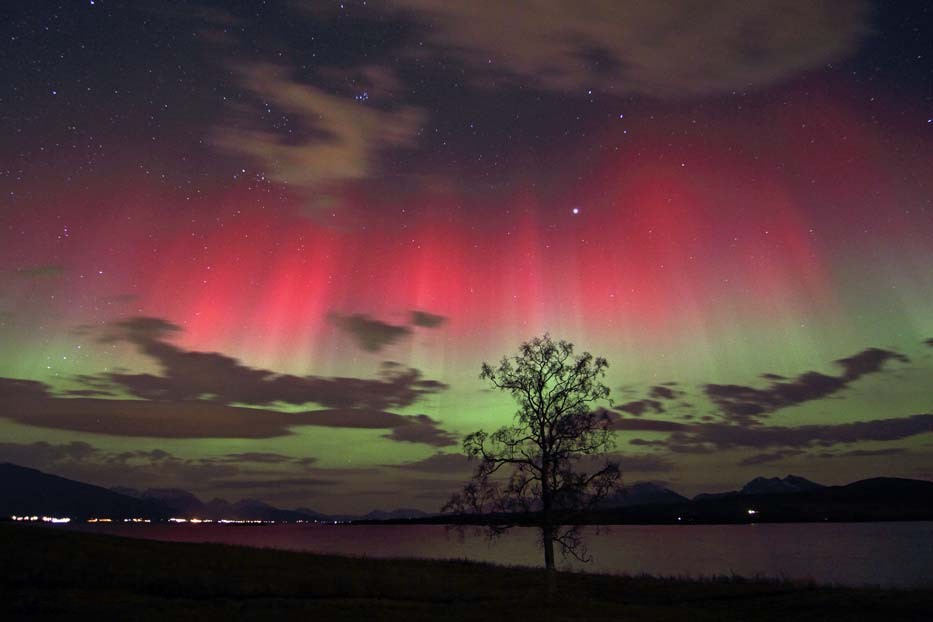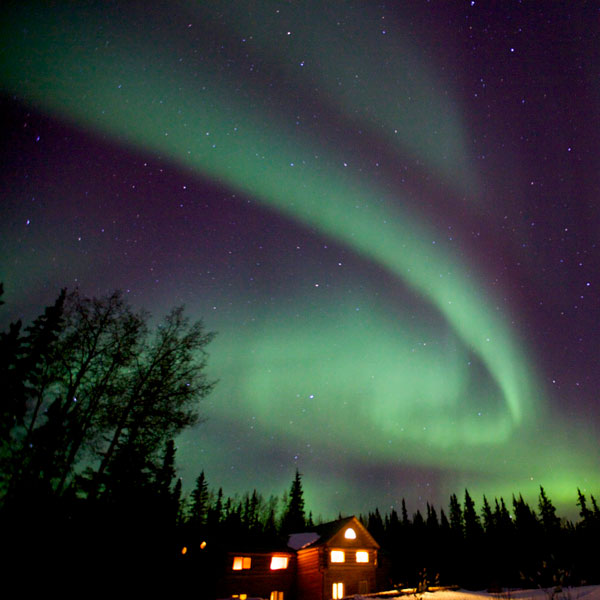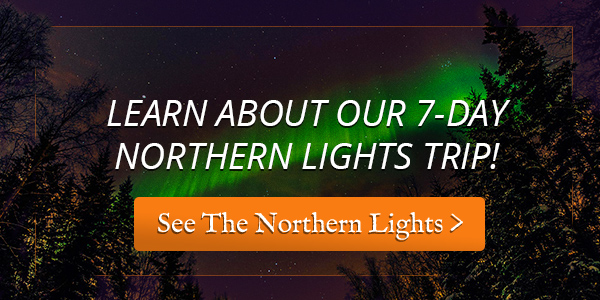Hunting for the Northern Lights
The Northern Lights: The spirits of our ancestors hanging out in the sky, or the scientifically-explainable phenomenon caused by high-speed subatomic collisions? Most folks have heard of the majestic dancing lights in the sky. We all probably know that they are the identical twins of the Southern Lights, and that both are visible near the magnetic poles of the north and south and they just glitter and flutter up in the atmosphere like iridescent waves on a black beach. But for those who dare to track down these sometimes elusive lights, there are some things to know to seek the glow.

A Glowing Sky
Explaining How The Northern Lights Happen
Let’s start with the attention-getters: The lights are caused by solar winds careening away from the sun and colliding with particles in our atmosphere, some 40-hours later. As these million mile-per-hour electrons come flying from earth toward the sun, they smash into gas particles in our atmosphere. Counter-intuitively, it is because the magnetic fields are weaker at the poles that the electrons are able to break through and interact with our atmosphere, resulting in the green, pink, red, and even violet Borealis display. At these high speeds and unpredictable presence, it can be tough to see them.
Or, at least, that’s one explanation. Many other, far more ancient theories exist, such as the Inuit belief that the Northern Lights are actually spirits playing football with the head of a Walrus. While science, sadly, tends to dismiss this notion, the issue is unresolved as far as this author is concerned. Walrus heads is simply a more interesting explanation.
Chasing the Elusive Northern Lights — How Weather Impacts Northern Lights Visbility
Trouble is, weather in the arctic is notoriously finicky. Clouds roll in, clouds roll out, and clear skies are required to see the Aurora Borealis. So patience is a virtue that bears using when trying to hunt the lights. In addition, there is a chance that the lights will not be visible even if the clouds have receded. There are apps out there that indicate the chance of seeing the lights, but even those aren’t 100% accurate. The best way is to get yourself a good window seat or a giant coat and a book, and make sure you’ve got other things to do. Dog-sledding, Alaskan Breweries, Hot Springs, and many other unique sights and sounds pepper the area in Northern Alaska, and Gondwana highly recommends giving them some attention as well. Alaska, Finland, Norway, and Iceland are all beautiful countries in their own right, so make sure you’re there with intent to see the people, places, and landscapes that harbor such magical skies.
Though the days will be short during the months when the lights are visible, there is plenty to do during the days. Sometimes the Northern Lights are even visible during the day, but not to the naked eye. Pictures of day-lit skies can sometimes reveal the solar activity. There’s a reason people come from across the world to see the Northern Lights: They are spectacular when the timing is right, usually from mid-to-late December through March. Ideally, you’ll want to give yourself at least 3-4 solid days to keep watch, and having a knowledgable eye on hand to watch the skies is always helpful! I defy you to find a more impressive natural phenomenon in the sky.
Are you interested in seeing the Northern Lights?
Check out our Northern Lights Adventure.
Read more to find out when the best time to see the Aurora Borealis is. During the winter months, which is typically from September to April, you can catch these mesmerizing lights when the nights are longer and skies are darker. On top of that, geomagnetic activity plays a significant role, so checking aurora forecasts and aiming for periods of high solar activity can increase your chances of witnessing this natural phenomenon.



